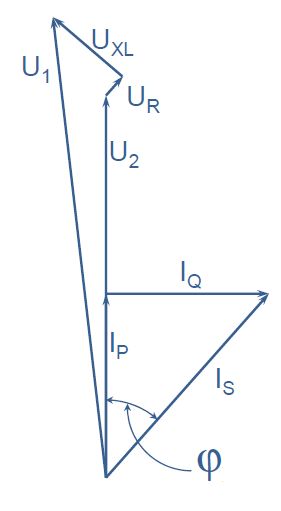
What are the benefits of improving power factor? (Part 2)

Figure 1: Voltage drop caused by transmission of active and reactive current through network impedances when reactive power is not compensated.
It can be calculated that the voltage drop in the case in figure 1 is 21.4 kV or 16.2 %. In figure 2 the voltages at the same points are presented, when 40 MVAr of reactive power compensation is connected with the load.

Figure 2: Voltage drop in transmission line, when load reactive power is compensated.
When almost all of the load reactive power is compensated locally, the voltage drop in the transmission line is decreases significantly. It can be calculated that the voltage drop in the case of figure 2 is 6.2 kV or 4.7 %.
With certain loads, such as electric arc furnaces, the consumption of reactive power fluctuates very rapidly and heavily. This means that also the apparent power and the total supply current vary rapidly. Since voltage drop from power source to the consumption point is directly proportional to the resistance and reactance of the supply path and to the load current, heavily fluctuating load current causes also variations in voltage magnitude.
The fluctuating voltage affects also other power users. The most typical consequence of voltage variations is the variation in the luminance of light sources known as flicker. Even small voltage changes of few percentages can cause flicker when the frequency of the voltage variations is around 8 to 10 Hz. Flicker causes discomfort and affects our brain.
Fluctuating voltage can also reduce productivity, for example the melting time of an electric arc furnace is lengthened with fluctuating supply voltage. Loads supplied with rapidly fluctuating voltage have decreased efficiency and age more rapidly. For example, the torque and speed of induction machines are affected by voltage fluctuations, which again may affect production processes. Induction motors operating at maximum torque may even stall if voltage fluctuations are severe. Voltage fluctuations may also cause false tripping of relays or interfere with the operation of sensitive electronic equipment; both of which may have substantial economic effects due to production losses. Line commutated converters’ power factor, displacement power factor and harmonics production are also subject to the input voltage.
To sum up, the benefits of compensating reactive power are:
- Stabilization of voltage
- Flicker elimination
- Improving power factor
- Transmission capacity enhancement
- Increased productivity of some industrial processes